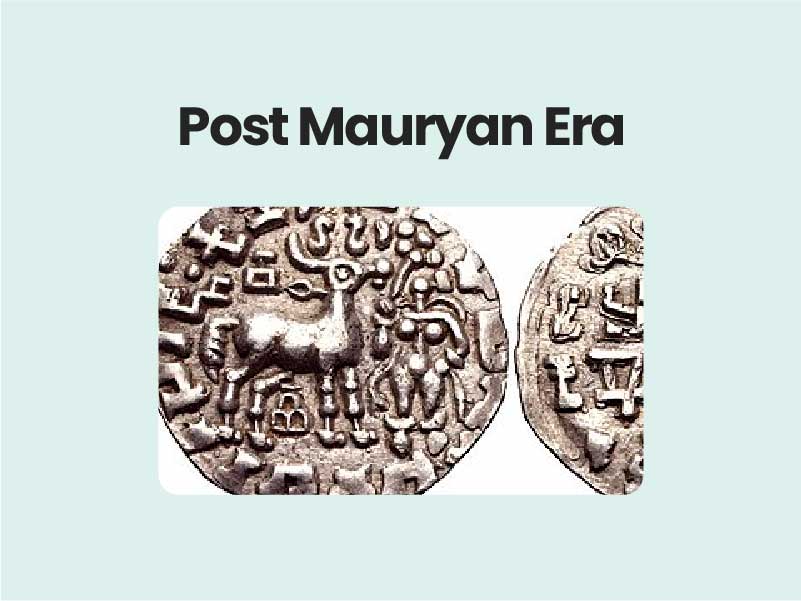Companion@360 → 7 Month programme to sharpen your writing skills → REGISTER NOW

Kanishka and Buddhism
- Kanishka embraced Buddhism in the early part of his reign
- his coins exhibit the images of not only Buddha but also Greek and Hindu gods
- reflect the Kanishka’s toleration towards other religions
- In the age of Kanishka the Mahayana Buddhism came into vogue. It is different in many respects from the religion taught by the Buddha and propagated by Asoka. The Buddha came to be worshipped with flowers, garments, perfumes and lamps.
- image worship and rituals developed in Mahayana Buddhism.
- Kanishka also sent missionaries to Central Asia and China for the propagation of the new faith.
- Buddhist chaityas and viharas were built in different places. He patronised Buddhist scholars like Vasumitra, Asvagosha and Nagarjuna.
- e also convened the Fourth Buddhist Council to discuss matters relating to Buddhist theology and doctrine. It was held at the Kundalavana monastery near Srinagar in Kashmir under the presidentship of Vasumitra.
- Council prepared an authoritative commentary on the Tripitakas and the Mahayana doctrine was given final shape.
- Asvagosha was a great philosopher, poet and dramatist. He was the author of Buddhacharita. Nagarjuna from south India adorned the court of Kanishka. The famous physician of ancient India Charaka was also patronized by him
Gandhara Art
- home of the Gandhara school of art is the territory in and around Peshawar in northwestern India
- best of the Gandhara sculpture was produced during the first and second centuries A.D
- It originated during the reign of Indo-Greek rulers but the real patrons of this school of art were the Sakas and the Kushanas, particularly Kanishka
- Gandhara art was a blend of Indian and Graeco-Roman elements. Specimens of Gandhara sculpture have been found in Taxila, Peshawar and in several places of northwest India.
- Gandhara school made sculptures of the Buddha in various sizes, shapes and postures.
- The reliefs depict Buddha’s birth, his renunciation and his preaching.
- The salient features of Gandhara art are
- Moulding human body in a realistic manner with minute attention to physical features like muscles, moustache and curtly hair.
- Thick drapery with large and bold fold lines.
- Rich carving, elaborate ornamentation and symbolic expressions.
- The main theme was the new form of Buddhism – Mahayanism and the evolution of an image of Buddha.
Mathura School of Art
-
- developed at Mathura in modern Uttar Pradesh is called the Mathura art
- the Mathura school of art developed on indigenous lines.
- Buddha images exhibit the spiritual feeling in his face which was largely absent in the Gandhara school.
- Mathura school also carved out the images of Siva and Vishnu along with their consorts Parvathi and Lakshmi.
- The female figures of yakshinis and apsaras of the Mathura school were beautifully carved.
Sangam Age
- According to Tamil legends, there existed three Sangams (Academy of Tamil poets) in ancient Tamil Nadu popularly called Muchchangam.
- Sangams flourished under the royal patronage of the Pandyas.
- first Sangam, held at Then Madurai, was attended by gods and legendary sages but no literary work of this Sangam was available
- second Sangam was held at Kapadapuram but the all the literary works had perished except Tolkappiyam.
- third Sangam at Madurai was founded by Mudathirumaran. It was attended by a large number of poets who produced voluminous literature but only a few had survived. These Tamil literary works remain useful sources to reconstruct the history of the Sangam Age
- Sangam Literature
- The corpus of Sangam literature includes Tolkappiyam, Ettutogai, Pattuppattu, Pathinenkilkanakku, and the two epics Silappathigaram and Manimegalai.
- Tolkappiyam authored by Tolkappiyar is the earliest of the Tamil literature
- a work on Tamil grammar but it provides information on the political and socioeconomic conditions of the Sangam period.
- Ettutogai or Eight Anthologies consist of eight works – Aingurunooru, Narrinai, Aganaooru, Purananooru, Kuruntogai, Kalittogai, Paripadal and Padirruppattu.
- Pattuppattu or Ten Idylls consist of ten works – Thirumurugarruppadai, Porunararruppadai, Sirupanarruppadai, Perumpanarruppadai, Mullaippattu, Nedunalvadai, Maduraikkanji, Kurinjippatttu, Pattinappalai and Malaipadukadam.
- Ettutogai and Pattuppattu were divided into two main groups – Aham (love) and Puram (valour).
- Pathinenkilkanakku contains eighteen works mostly dealing with ethics and morals. The most important among them is Tirukkural authored by Thiruvalluvar.
- Silappathigaram was written by Elango Adigal and Manimegalai by Sittalai Sattanar also provides valuable information on the Sangam polity and society
- Hathikumbha inscription of Kharavela of Kalinga also mentions about Tamil kingdoms. The excavations at Arikkamedu, Poompuhar, Kodumanal and other places reveal the overseas commercial activities of the Tamils.
Period of Sangam Literature
-
- The sheet anchor of Sangam chronology lies in the fact that Gajabhagu II of Sri Lanka and Cheran
- Senguttuvan of the Chera dynasty were contemporaries
- This is confirmed by Silappathigaram as well as the Dipavamsa and Mahavamsa.
- , the most probable date of the Sangam literature has been fixed between the third century B.C. to third century A.D. on the basis of literary, archaeological and numismatic evidences.
Political History
- Tamil country was ruled by three dynasties namely the Chera, Chola and Pandyas during the Sangam Age.
- Cheras
- ruled over parts of modern Kerala.
- Their capital was Vanji and their important seaports were Tondi and Musiri.
- Pugalur inscription of the first century A.D refers to three generations of Chera rulers.
- Padirruppattu also provides information on Chera kings.
- Perum Sorru Udhiyan Cheralathan, Imayavaramban Nedum Cheralathan and Cheran Senguttuvan were the famous rulers of this dynasty.
- Cheran Senguttuvan belonged to 2nd century A.D. His younger brother was Elango Adigal, the author of Silappathigaram.
- his expedition to the Himalayas was remarkable. He defeated many north Indian monarchs.
- Senguttuvan introduced the Pattini cult or the worship of Kannagi as the ideal wife in Tamil Nadu.
- The stone for making the idol of Kannagi was brought by him after his Himalayan expedition
- the consecration ceremony was attended by many princes including Gajabhagu II from Sri Lanka.
Cholas
- Chola kingdom of the Sangam period extended from modern Tiruchi district to southern Andhra Pradesh
- the capital was first located at Uraiyur and then shifted to Puhar
- Karikala was a famous king of the Sangam Cholas.
- Pattinappalai portrays his early life and his military conquests.
- In the Battle of Venni, he defeated the mighty confederacy consisting of the Cheras, Pandyas and eleven minor chieftains.
- Vahaipparandalai was another important battle fought by him in which nine enemy chieftains submitted before him. Karikala’s military achievements made him the overlord of the whole Tamil country.
- Trade and commerce flourished during his reign period.
- reclamation of forest lands and brought them under cultivation thus adding prosperity to the people. He also built Kallanai across the river Kaveri and also constructed many irrigation tanks.
Pandyas
- Pandyas ruled over the present-day southern Tamil Nadu. Their capital was Madurai
- two Neduncheliyans. The first one was known as Aryappadai Kadantha Neduncheliyan (one who won victories over the Aryan forces). He was responsible for the execution of Kovalan for which Kannagi burnt Madurai. The other was Talaiyalanganattu Cheruvenra (He who won the battle at Talaiyalanganam) Neduncheliyan. He was praised by Nakkirar and Mangudi Maruthanar.
- Maduraikkanji written by Mangudi Maruthanar describes the socio-economic condition of the Pandya country
- flourishing seaport of Korkai
- Pandyan rule during the Sangam Age began to decline due to the invasion of the Kalabhras
- Minor Chieftains
- Pari, Kari, Ori, Nalli, Pegan, Ay and Adiyaman were popular for their philanthropy and patronage of Tam
Read Also President’s Rule

